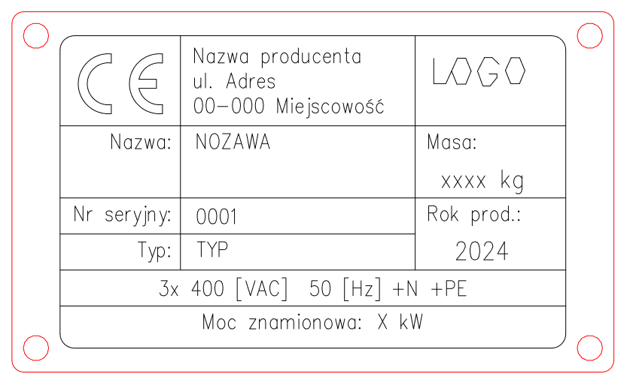Are you aware that the CE nameplate is a crucial identifier for machinery within the European Union market? Its significance has increased following the introduction of Regulation 2023/1230/EU, which implements significant changes to machinery requirements. This article explores the current guidelines for the CE nameplate, key considerations in machinery design, and changes following the repeal of Directive 2006/42/EC.
Table of Contents
What is a CE Nameplate?
The CE nameplate is a mandatory component for any machinery introduced to the EU market. It serves as an identification form that must include essential details such as the manufacturer’s name, production year, serial number, and other technical specifications related to safety. The CE marking on the nameplate indicates that the machinery complies with all applicable EU harmonization legislation, ensuring safe usage through the CE nameplate.
New Requirements Under Regulation 2023/1230/EU
Regulation 2023/1230/EU, which replaces the previous Directive 2006/42/EC, introduces more precise and stringent requirements for the CE nameplate. The new legal act establishes detailed rules regarding the content and positioning of the CE nameplate to ensure better visibility and readability. The changes include:
- Enhanced Information Precision: Manufacturers must include a contact address on the nameplate, not only in postal form but also a website or email address. This aims to facilitate communication between the manufacturer, distributor, and machine user.
- Clear Markings for New and Used Machinery: The regulation covers products new to the EU market and used machinery imported from outside the Union. In both cases, the nameplate must contain appropriate information to eliminate doubts about the machine’s origin and condition.
- Digital Elements Requirements: According to the new regulations, the CE nameplate may include digital elements, such as a QR code, leading to additional instructions or detailed technical documentation. This solution aims to facilitate access to information and provide users with up-to-date machine data.
Safety and Health Requirements
The new regulation specifies health and safety requirements that must be met for a machine to be approved for sale in the EU market. The CE nameplate plays a vital role here, as it provides the basic information needed to conduct a risk assessment. Manufacturers must include all safety-related information, including any usage restrictions consistent with the CE nameplate.

Importance of CE Nameplate in Conformity Assessment
The conformity assessment process, as per Regulation 2023/1230/EU, requires the CE nameplate to be an integral part of the machine’s documentation. If a machine undergoes significant modifications affecting its safety, a new conformity assessment must be conducted, and the nameplate should be updated with new information. This applies to both physical changes in the machine and software modifications, as specified by the CE nameplate.
Difference Between Directive 2006/42/EC and Regulation 2023/1230/EU
While Directive 2006/42/EC emphasized general machinery compliance with regulations, Regulation 2023/1230/EU goes further, providing more detailed frameworks for manufacturers and distributors. The new regulations clearly state that all products introduced to the market must be accurately labeled and easily identifiable, aiding not only market surveillance but also supply chain tracking and compliance verification at every product lifecycle stage, in accordance with the CE nameplate.
The CE nameplate is not merely a formality but a crucial element contributing to the safety and compliance of machinery with EU regulations. Regulation 2023/1230/EU introduces new requirements aimed at raising safety standards and ensuring transparency and ease of communication between manufacturers and users. Updated requirements regarding the content and form of the nameplate help better protect users and ensure that machines comply with the highest safety standards.
Do your machines meet all the new labeling requirements? Remember, the CE nameplate is the first step in ensuring safety in the EU market—make sure it is complete and compliant with current regulations.
FAQ: CE Nameplate
A CE nameplate is a machine identifier that contains information about the manufacturer, technical specifications, and CE marking, confirming compliance with EU regulations.
Yes, every machine introduced to the EU market must have a nameplate to meet regulatory requirements for identification and compliance.
The nameplate must include information such as: manufacturer’s name, production year, serial number, contact details (address, website, email), and other relevant technical specifications.
Yes, Regulation 2023/1230/EU mandates the inclusion of additional contact details and allows for digital elements like QR codes.
Yes, both new and used machines imported from outside the EU must have a nameplate containing all required information to be approved for sale in the EU market.
